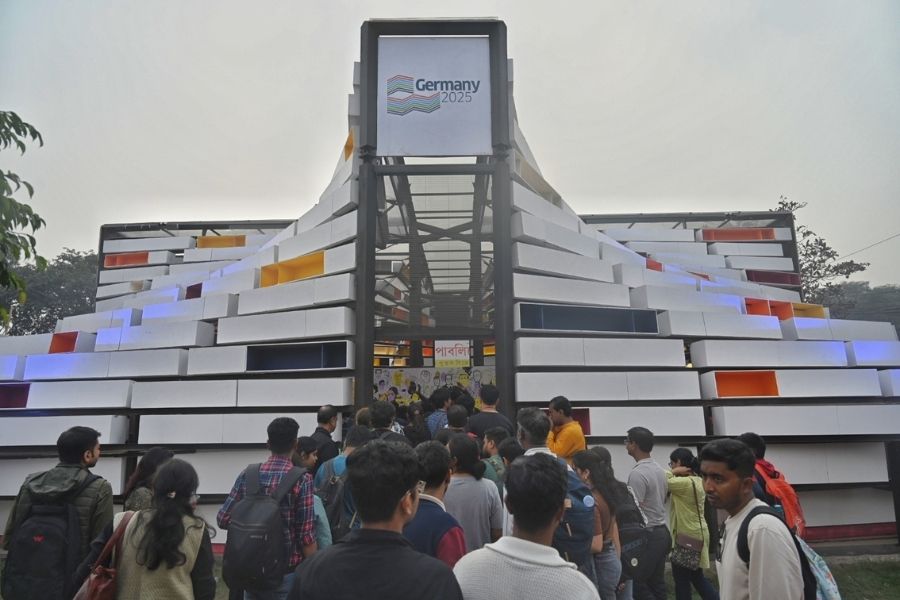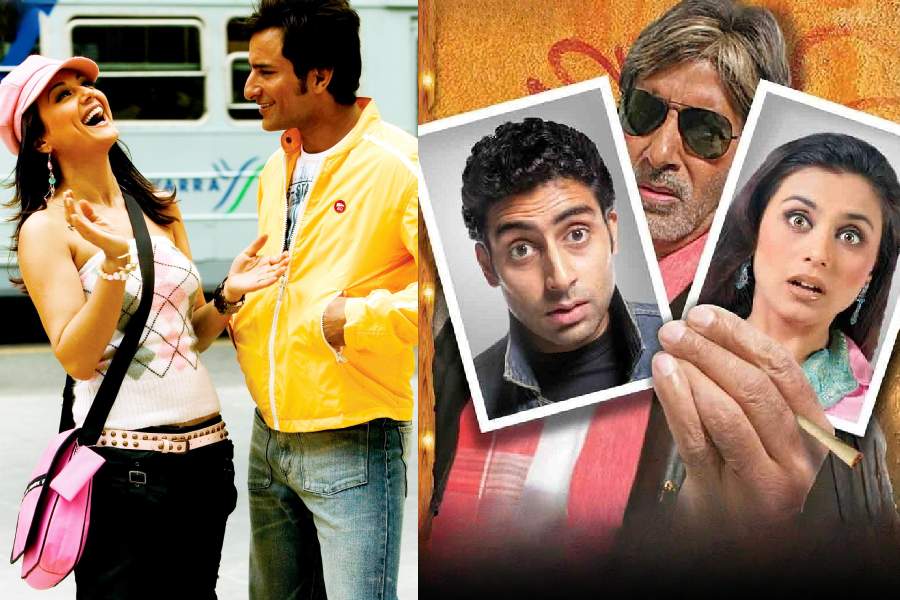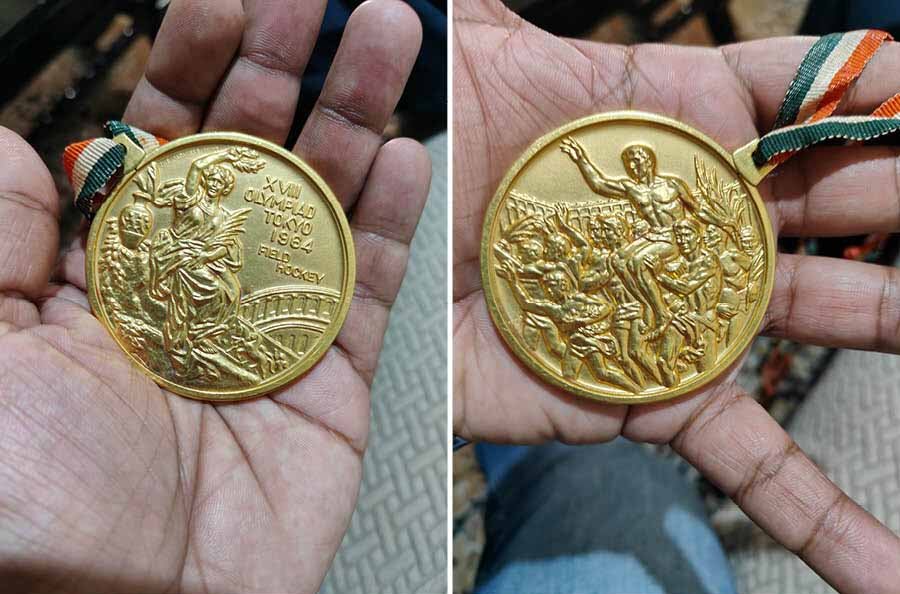
As shiny as it was six decades ago, hockey veteran Gurbux Singh’s 1964 Olympic gold medal is definitely the most prized item among the memorabilia that he has collected over the years, at his Ballygunge home. The medal has Field Hockey and Tokyo 1964 inscribed on each side and Nike the goddess of victory on one side. The other features an Olympic winner being carried by the crowd. The Olympic medals were identical from 1928 to 1968, but that changed from the 1972 Games in Munich, when unique medals were designed for each Summer Games
Debrup Chaudhuri
An Olympic medal symbolises an athlete’s victory on the most coveted stage, but did you know that along with the medals, athletes are also given certificates declaring them to be an Olympic champion. A tradition that is carried forward to this day, the Olympic medalists are given individual certificates separately and never on the podium. Gurbux Singh’s gold medal certificate from Tokyo 1964 hangs proudly on his wall
Amit Datta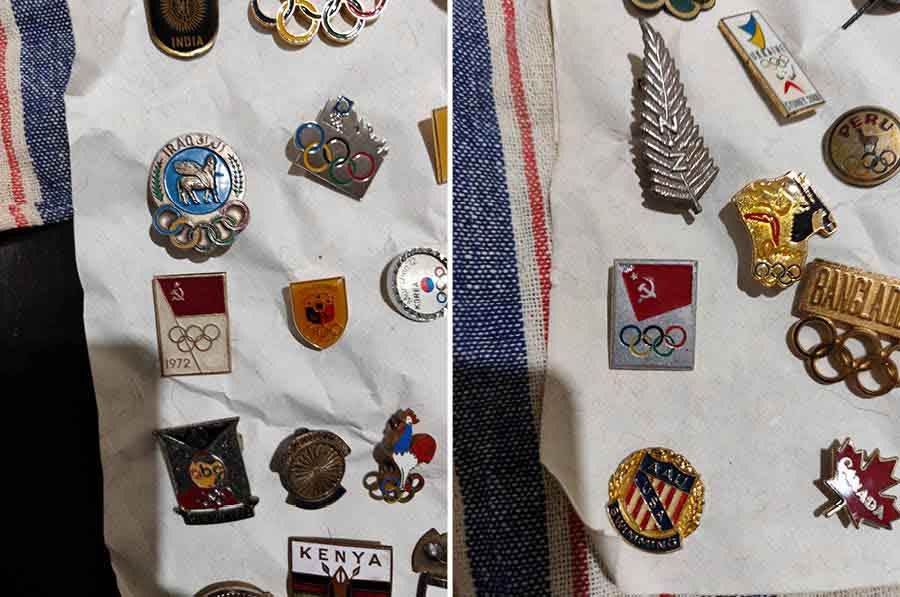
Pins from a country that doesn’t exist any longer. Gurbux Singh has a wide range of pins that he has collected at each Olympic village he has been to. Two of his many pins that cannot be seen at the Olympics anymore are that of Soviet Russia — the USSR. Gurbux Sing recognises the pins from USSR as the most unique in his collection
Debrup Chaudhuri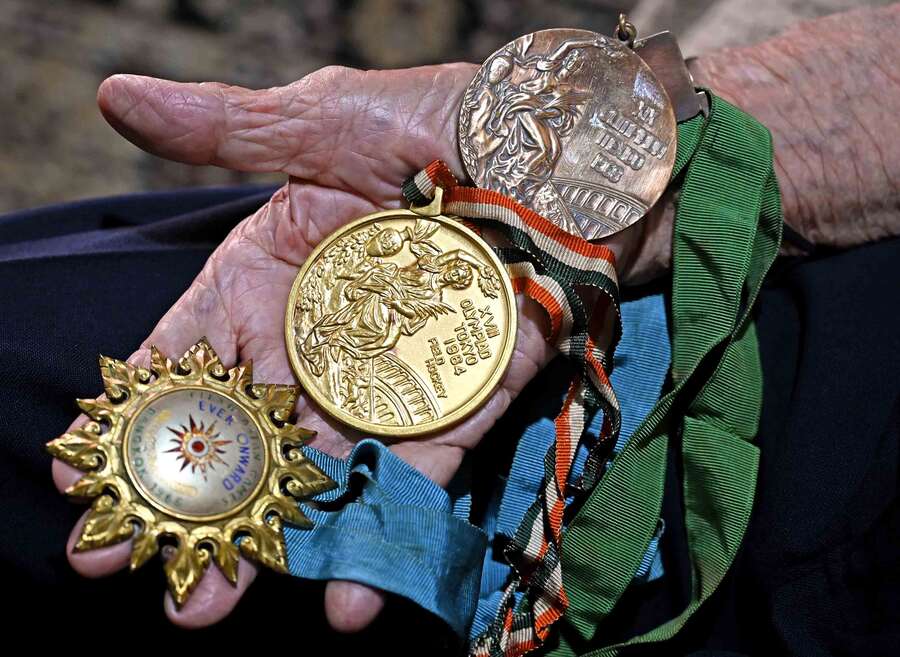
Laurels on the palm of a champion. With his Asian Games 1966 Gold medal, the first for the Indian field hockey team and his two Olympics medals. Notice that the Gold medal from Tokyo 1964 is thicker and has a rim around it in comparison to the Bronze medal from Mexico 1968. The Bronze medal is indeed thinner and lighter than the gold
Amit Datta
Every Olympic village is massive, where thousands of athletes from hundreds of countries come and stay while they compete in their events. How do athletes make friends and how do they socialise with those they have never met before from countries they have never been to? These Olympic pins are a huge part of the traditions for the athletes at the Olympic village. Collecting pins is definitely a hobby for many athletes, but these pin exchanges are what gets them interacting with sports persons from different fields. Gurbux Singh’s collections include pins from eight different summer games
Amit Datta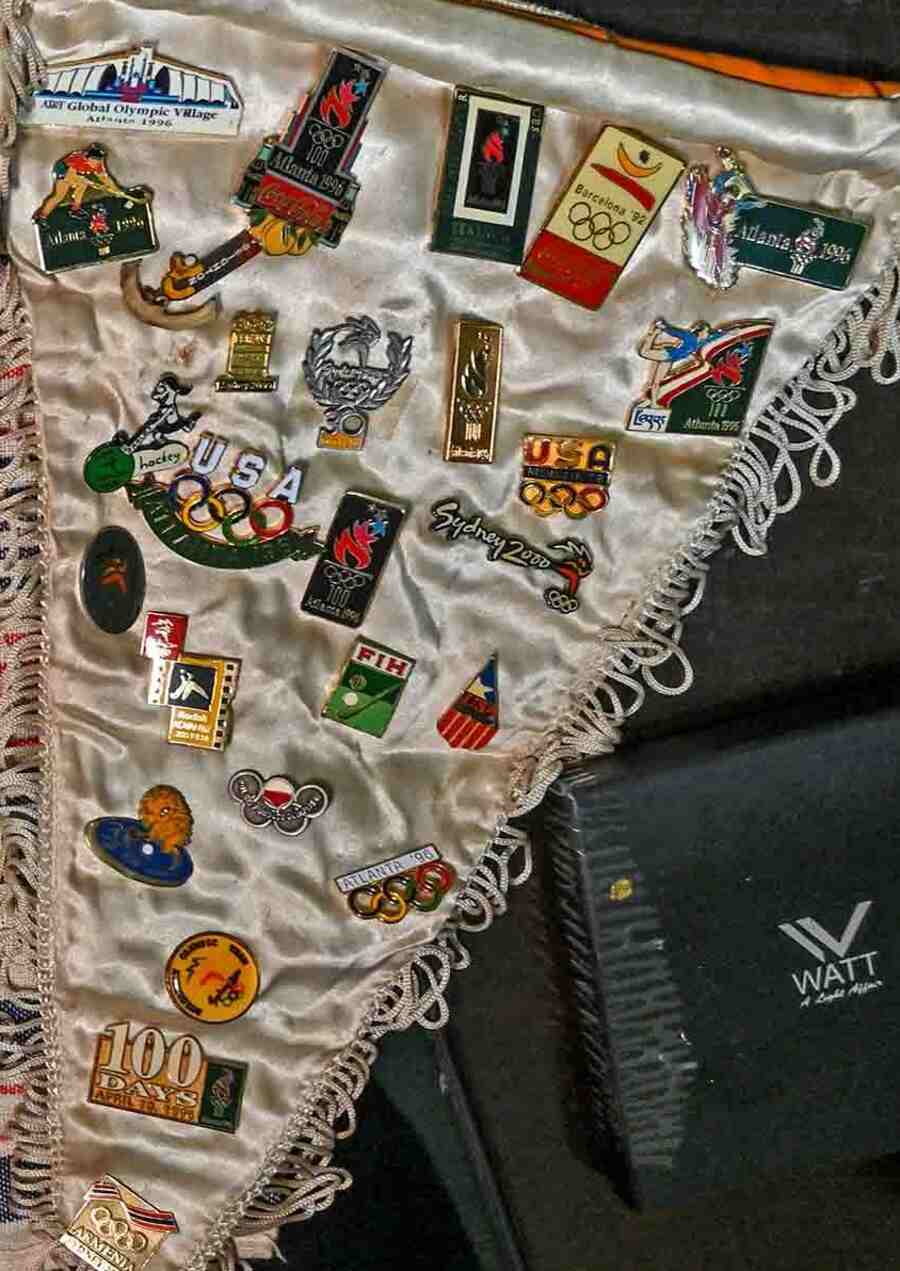
Each country gives its athletes a handful of pins before they head to the Olympic village. The idea is to exchange them with other athletes, get pins of different countries and get into interesting conversations that turn into friendships. For the collectors it's always about how many unique pins you can get
Amit Datta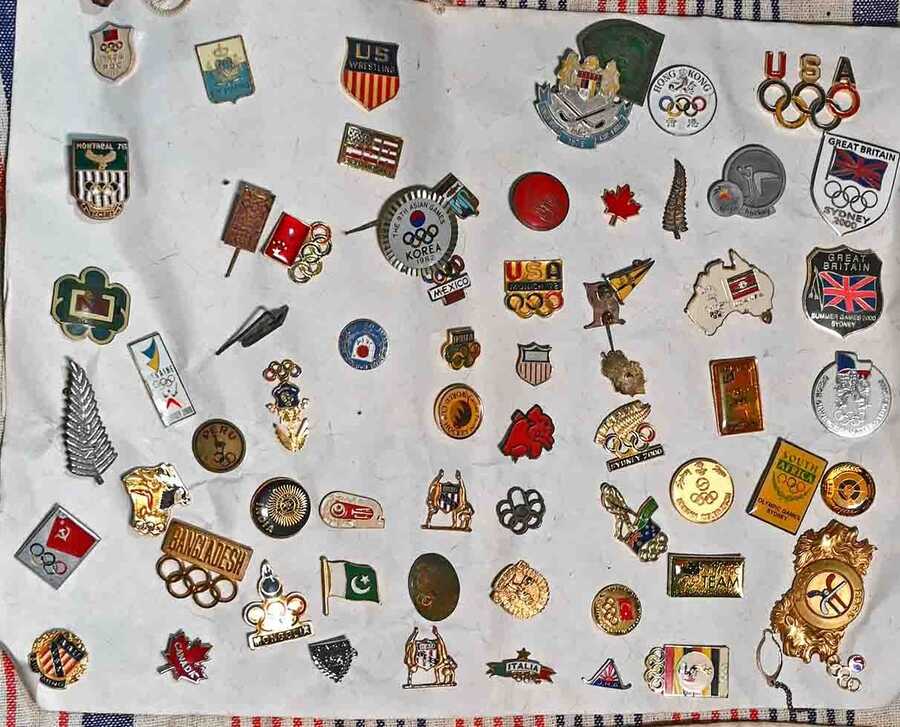
Like any other collectible, Olympic pins have a value to them — the more unique the pin, the more the value. This year, the USA contingent did not have a standard pin for all the athletes, but rather, pins based on their sport. Simone Biles’s pin was unique and much sought after. While monetary value is a definite bonus, athletes like Gurbux Singh do not collect them to make money, but rather to make a collection to look back on. With pins from Germany, USA, Soviet Russia, Australia and countries like Bangladesh and Pakistan, one can only wonder what the conversations would be like between athletes when they exchange their pins
Amit Datta